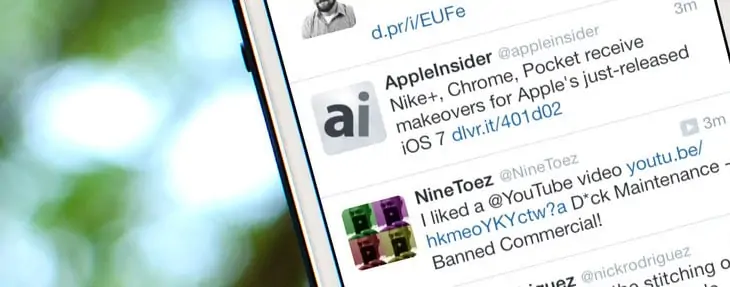Why should I set up a Twitter account for my ecommerce site?
Twitter is a powerful social media tool you should get to grips with if you’re setting up your own ecommerce website. Once you get into it, Twitter can be used to improve customer engagement and satisfaction, boost your online profile, and increase sales. What’s more, it can be fun
At the time of writing, Twitter has 316 million users, which makes it the sixth largest social networking site in the world. That’s a lot of potential customers. And no other social media platform allows such direct and instant communication between consumers and businesses.
How to set up your Twitter profile
First things first, before diving right into the world of Twitter, it’s good idea to take some time to think about what you are trying to achieve through Twitter and who your audience is going to be. Are you going to be trying to find new customers? Or establish yourself as a leading, trusted voice in your field of expertise? Or use Twitter mainly as a customer support tool? Who is your target audience? Explore Twitter to find the topics and places where your audience are tweeting. Try to find the main Twitter influencers and leaders in your field and aim to interact with them.
Now to build your profile. Your page needs to clearly explain who you are and what your business is selling. Potential followers will always check out your page before deciding to follow you, so it needs to match and explain your brand.
Your Twitter name, or handle, is the first job. Ideally it should exactly match your brand name but, if this is already taken for some reason, try adding _ between words, adding related words, or making other small adjustments to produce a unique handle, rather than radically changing the name of your brand! You then need to provide a header image, profile picture (this should be your company logo, if you have one), a bit of information about your business and your details, such as website and location. Make sure all of these tie in with your website and look as similar to each other as possible, in order to keep things consistent.
How to use Twitter – the basics
To the uninitiated, Twitter has its own indecipherable language and etiquette that can take a bit of getting used to.

A basic Twitter glossary:
- Direct Message (DM): A direct, private message between two people that other users cannot see. You can only send a direct message to someone who is one of your followers.
- Hashtag (#): A search tool that allows you to find tweets, based on topics. All of your tweets should include a hashtag, so people can search for your tweets. Twitter will show you the trending hashtags each day. Creating your own hashtag can be an effective way of increasing your brand visibility.
- Mention (@): Reference another Twitter user by mentioning their Twitter handle (for example @bob23) in a tweet. They will be notified when they are mentioned.
- Retweet (RT): By re-sharing a tweet someone else has written, you can spread the word quickly on Twitter. Getting your tweets re-tweeted is an important goal, as retweets mean your original post will be seen by more people.
- Tweet: A message of no more than 140 characters.
The key to Twitter is engagement! You want other Twitter users to follow you, retweet your tweets, use your hashtag, click on your links and ‘like’ or ‘favourite’ your tweets.
Some tips:
- Include hashtags in your tweet, but no more than two.
- Include interesting links to things that are relevant to your area of business.
- Think about when you tweet. Research suggests tweets sent during the busy hours of the day (8am-7pm) get more engagement. The weekend is a good time for brands to be tweeting. You can use a tool like Buffer or Hootsuite to schedule tweets ahead of time if you don’t want to be tweeting over the weekend!
- Twitter is a live, ever-changing stream of talk. You should be tweeting four to five times a day or your tweets will be missed – but don’t tweet for the sake of it, make sure you have something to say or share!
How to use Twitter – ecommerce business tips
Twitter can be useful for your business in a few different ways:
Customer service
Twitter is a great way for your customers to be able to contact you quickly and easily with problems or complaints. While you might flinch at the idea of complaints being raised in such a public arena, this can actually have a really positive impact on your business if you are seen to be dealing with them in a fast, friendly and responsive way.
If you receive positive feedback, share it! Retweet it and spread the word about how great you are. Respond to the customer to say thanks and that you’re pleased they had such a good experience.
Research

Twitter is a great place to research your target market, your competitors and your business idols. Spend time finding hashtags that relate to your business and get involved in the chat. Follow leaders in your sector and learn from their success. Twitter can be a pretty inspirational place!
Twitter product cards
A Twitter product card lets you provide more information about a product than you could fit in a standard, 140 character tweet. You can display the product name and an image, alongside a description.
Promotion
Encourage your followers to tweet about their purchases. Lots of people are willing to do this but wouldn’t actually take the first step without prompting. A reward, such as some kind of discount, can be a helpful incentive.
And in the future – selling!
Twitter have announced that they will be bringing in a ‘Buy’ button, letting customers purchase directly through Twitter. All the more reason to get established on Twitter now. What are you waiting for? Happy tweeting!
